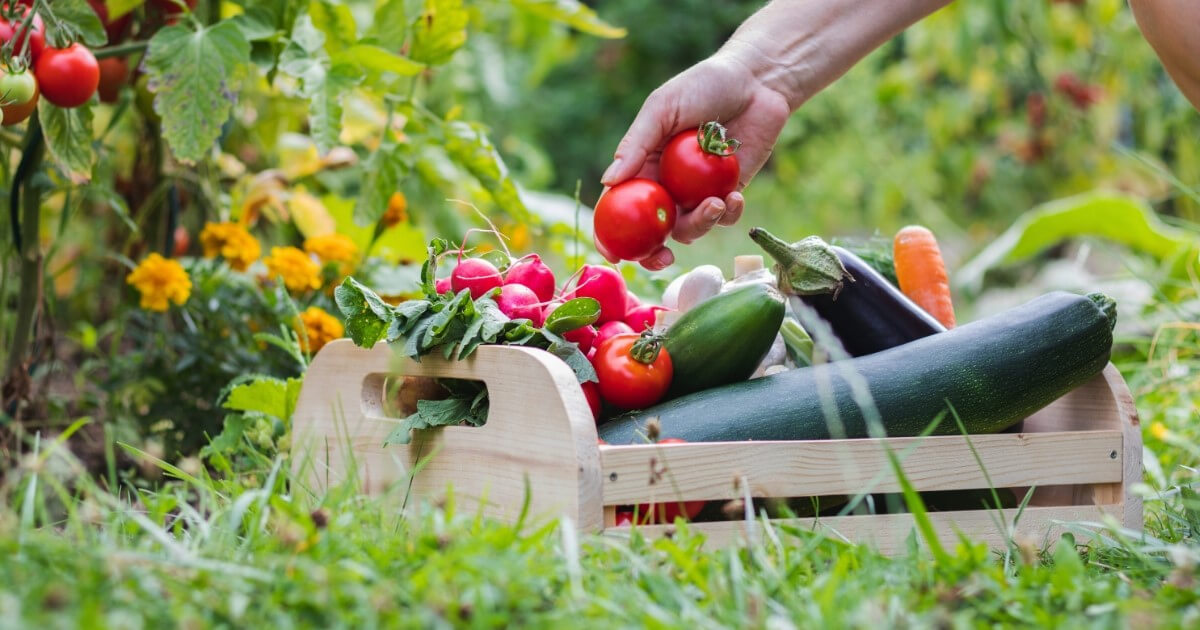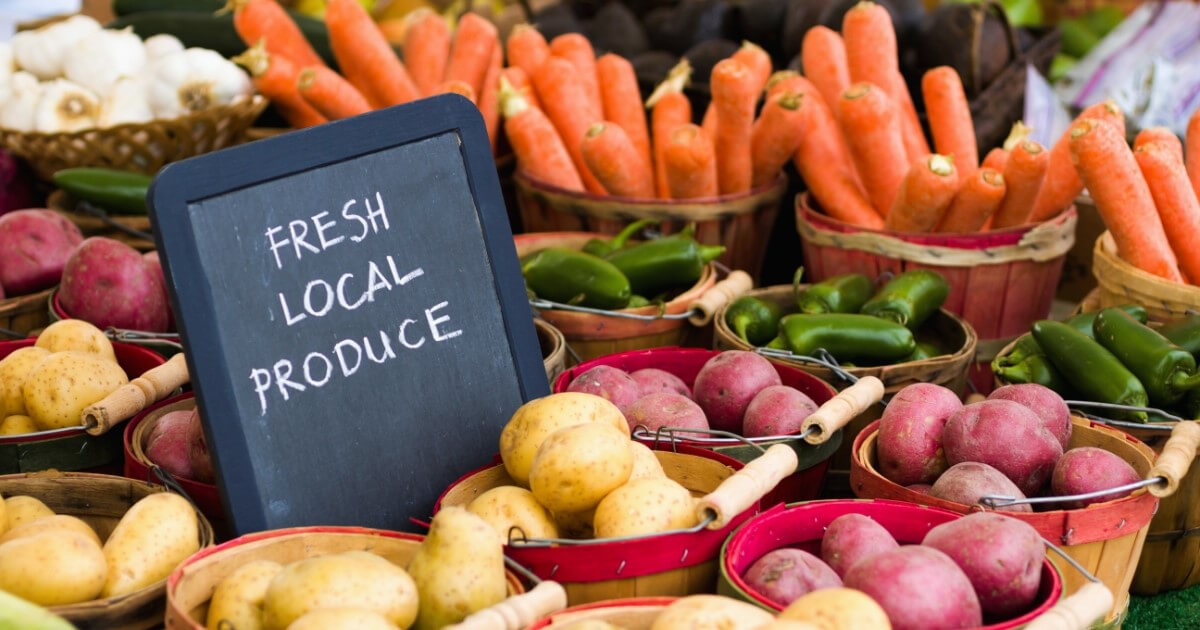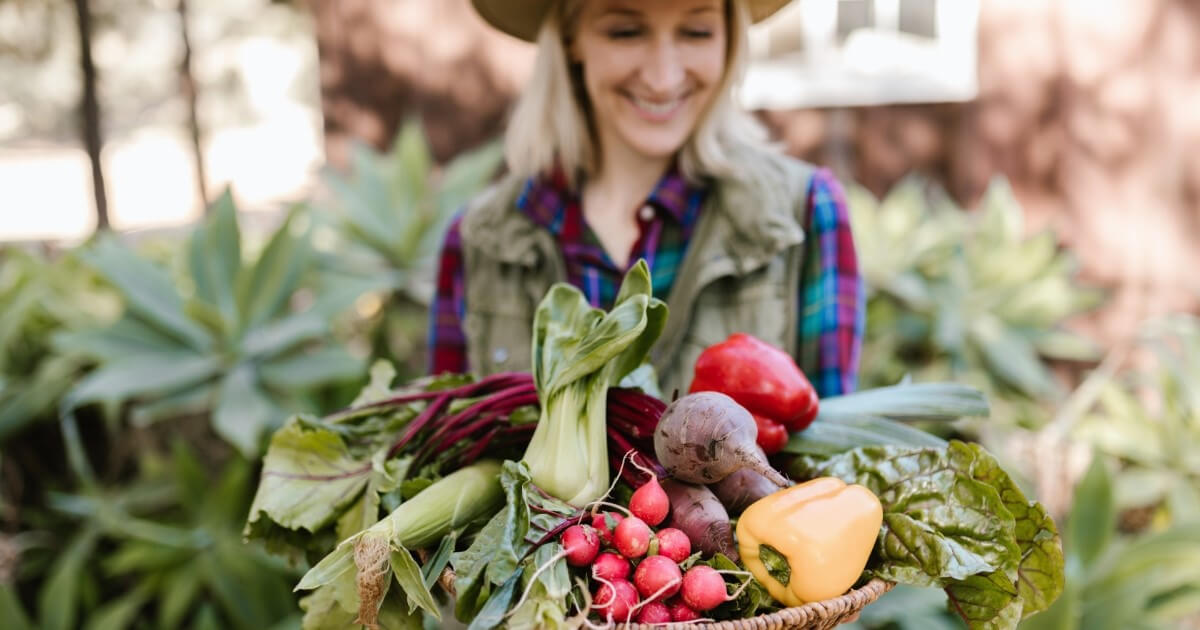2025 NYC Trends: Local Produce & Sustainable Menus
Table of contents
-
Sustainability – The Leading Food Trend in 2025
-
How to Create Sustainable Menus with Local Sourcing
-
1. Embrace Micro-Seasons for Maximum Flavor
-
2. Make the Most of Every Ingredient
-
3. Tell the Story Behind Your Ingredients
-
4. Work with the Right Wholesale Supplier
-
The Benefits of Sourcing Local Produce for Restaurants
-
How Riviera Produce Is Supporting Local Farmers/a>
Summer may still be a few months away, but the way restaurants source wholesale fruits and vegetables is starting to shift. And since the way to a person’s heart is through their stomach, chefs are stepping up their game—from knife skills and prep to final plating to impress diners craving fresher, more sustainable meals.
That’s where hyper-local and farm-to-table sourcing offers a clear advantage. They bring peak-season flavor to the plate, support regional farms, and reduce your kitchen’s environmental footprint, all without sacrificing convenience.
In this guide, we’ll break down how hyper-local sourcing helps build a menu that is both sustainable and profitable, and how the right wholesale partner can make getting farm-fresh produce to your kitchen effortless. Let’s dive in!
Sustainability – The Leading Food Trend in 2025

In 2025, sustainability is taking center stage in the food industry. In general, more Americans want transparency regarding their food choices and are willing to pay more for them. They would like to know where it comes from, how it’s grown, and its environmental impact. In response, restaurants and food businesses are increasingly seeking out local produce and sustainable practices.
Touch Bistro’s State of Restaurants Report shows that locally sourced ingredients were, alongside plant-based dishes, the most popular types of menu changes in 2024. And for 2025, 42% of operators said they plan to add more local food items to their menu, signaling a broader shift in the industry.
But what does sustainable sourcing really mean? Beyond choosing organic produce, it’s about supporting farming practices that promote biodiversity, reduce waste, and minimize carbon footprints, like regenerative agriculture and organic farming. And it’s about forming stronger relationships with local farms, ensuring that your business is part of a larger ecosystem that values ethical practices, fair labor, and environmental responsibility.
How to Create Sustainable Menus with Local Sourcing

Bringing local produce into your kitchen is a great first step, but building a truly sustainable menu goes beyond sourcing. The real challenge and opportunity lie in making the most of those ingredients while showing diners what local seasonal food is all about. From menu planning to ingredient usage, here are some ways to approach sustainable menu development in a way that makes an impact:
1. Embrace Micro-Seasons for Maximum Flavor
One of the biggest advantages of hyper-local sourcing is working with ingredients at their absolute peak. Instead of relying on broad seasonal changes, focus on micro-seasons: those fleeting windows when certain produce is at its best. For instance, early spring is the time for ramps, fiddleheads and nettles, while in late summer you can find heirloom tomatoes at their prime.
Designing dishes around these seasonal produce guarantees incredible flavor and keeps your menu fresh and exciting. Limited-time offerings and seasonal specials also create anticipation for diners, giving them a reason to return and experience something new.
2. Make the Most of Every Ingredient
Sustainability in the kitchen starts with a thoughtful approach to food waste. Root-to-stem cooking is a great way to reduce waste while adding unique elements to dishes. Preserving excess produce through pickling, fermenting, or drying helps extend shelf life and allows you to carry those peak flavors further into the season.
Using an ingredient across multiple dishes can also help you reduce waste and keep your inventory in check while making the most out of premium produce.
3. Tell the Story Behind Your Ingredients
Guests appreciate transparency; highlighting local sourcing is a great way to build trust and loyalty. Simple details, like listing the farm name or origin on your menu, can have a significant impact. Take it further by training your staff to share the backstory of key ingredients: how they were grown, why they were chosen, and what makes them special.
Make sustainability a core part of your brand. A dedicated “seasonal and local” section, a rotating chef’s special featuring farm-fresh ingredients, or small menu icons highlighting hyper-local dishes can help guests make more conscious dining choices.
Bring these stories to life beyond the menu. Share farm visits on social media, collaborate with local farmers for special events, or showcase behind-the-scenes moments of sourcing and prep. The more you connect diners to the origins of their food, the more memorable their experience will be.
4. Work with the Right Wholesale Supplier
Sourcing hyper-local produce doesn’t mean chasing down individual farms yourself. Partnering with a wholesale supplier that prioritizes local and regional sourcing can help you find seasonal ingredients from small farms while offering the convenience of bulk ordering and reliable delivery.
A trusted supplier can help you secure diverse, high-quality produce in bulk while ensuring reliable delivery, so you can focus on what matters most: creating incredible dishes and cocktails with the freshest ingredients available.
Farm-Fresh Produce Delivery for Restaurants
The Benefits of Sourcing Local Produce for Restaurants

With environmental concerns rising, food costs climbing, and consumer preferences evolving, sourcing local produce is a smart business move. It adds value to your menu, enhances quality, and helps you stand out in a competitive market. Here’s how:
- Freshness: Nothing beats the taste of farm-fresh produce. Local sourcing makes your dishes as fresh, flavorful, and nutritious as possible.
- Cost-Effective: By cutting out long transportation times and middlemen, hyper-local sourcing can often be more affordable than sourcing from farther away.
- Stronger Guest Appeal: Consumers actively seek out restaurants that prioritize local and sustainable ingredients, making this a key selling point.
- Support for Local Farmers: By sourcing locally, you’re contributing to the local economy and helping to preserve farms in the region.
- Environmental Impact: Hyper-local sourcing significantly reduces the carbon footprint associated with food transportation, making your business more sustainable overall.
How Riviera Produce Is Supporting Local Farmers
As a leading fresh fruit supplier near NYC, Riviera Produce is dedicated to connecting chefs and food businesses with niche farmers’ produce suppliers committed to growing high-quality, farm-fresh produce. We partner with a diverse network of local, sustainable farms from New York, New Jersey and Pennsylvania to bring NYC businesses the best of what’s available in the region.
By supporting these farmers, we aim to reduce the environmental impact of food production, contribute to the local economy, and provide food businesses with the unique products they need to stand out.
Whether it’s specialty produce for a unique menu item or bulk healthy ingredients for restaurants, Riviera Produce ensures you’re getting the highest quality, eco-friendly produce available.
Here are just a few of the local and regional farms we collaborate with:
- Lancaster Farm Fresh– Lancaster, PA
- Norwich Meadow Farms– Milton, New York
- Hepworth Farms– Milton, New York
- Satur Farms– Cutchogue, New York
- Koppert Cress– Riverhead, New York
- Winner Circle Farm– Oakhurst, New Jersey
Explore the full list of local farms working with Riviera Produce and order your favorite local produce today!